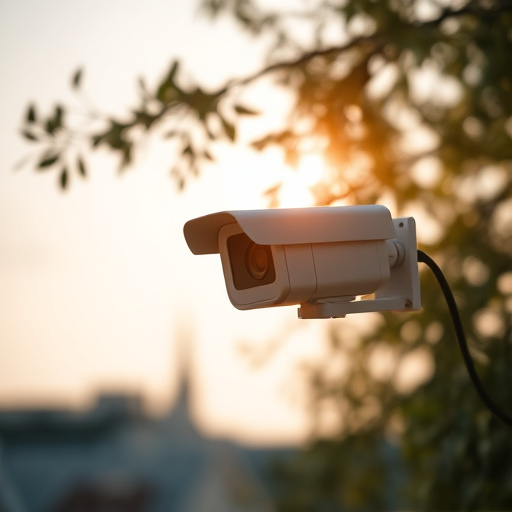Tiny cameras for home monitoring leverage electromagnetic signals like RF and IR to provide advanced security with features like night vision and motion detection. Integrated into smart home systems, these non-invasive devices offer covert surveillance, instant alerts, and proactive maintenance, revolutionizing residential security with discreet, high-quality monitoring. Strategically placed near walls or corners, they enhance signal strength for broader coverage while seamlessly blending into home environments, promoting peace of mind globally.
Uncover the secrets behind a revolutionary technology: the Hidden Lens Electromagnetic Signal Scanning Guide. This comprehensive guide explores the fascinating world of electromagnetic signals, their applications, and how they power modern home monitoring systems. Discover the role of tiny cameras in enhancing security, with non-invasive scanning techniques ensuring safe and efficient installation. Learn about signal optimization and advanced integrations that make smart homes truly come alive.
- Understanding Electromagnetic Signals: Basics and Applications
- The Role of Tiny Cameras in Home Monitoring Systems
- Non-Invasive Scanning Techniques for Safe Installation
- Signal Strength and Camera Placement Optimization
- Advanced Features and Integrations for Smart Homes
Understanding Electromagnetic Signals: Basics and Applications
Electromagnetic signals are an integral part of modern life, enabling various technologies and devices to communicate and function effectively. At their core, these signals represent the transfer of energy through space or materials using electromagnetic waves. The concept is akin to sending a message across vast distances using light or radio waves, ensuring information can be transmitted and received with minimal loss. Understanding this fundamental principle is crucial when exploring innovative applications in fields like home monitoring.
Tiny cameras for home monitoring, often disguised as everyday objects, leverage electromagnetic signal scanning techniques to capture and transmit video footage discreetly. These miniature devices employ hidden lenses to focus light onto sensors, converting it into digital signals for real-time surveillance. By utilizing the principles of electromagnetism, including radio frequency (RF) and infrared (IR) waves, these tiny cameras offer advanced security solutions without compromising aesthetics or privacy.
The Role of Tiny Cameras in Home Monitoring Systems
In the realm of home monitoring, tiny cameras have emerged as indispensable tools, offering unprecedented levels of security and peace of mind. These miniature yet powerful devices are transforming how folks approach safety, enabling them to keep an eye on their properties from anywhere at any time. With advanced features like night vision, motion detection, and remote access through mobile apps, tiny cameras for home monitoring have become a game-changer in the industry.
By integrating these cameras into smart home systems, users can receive instant alerts when suspicious activities occur, allowing them to take prompt actions. The ability to monitor indoor spaces covertly has significantly enhanced home security, making it easier to identify and deter potential intruders. Moreover, tiny cameras provide valuable evidence during investigations, serving as a testament to the importance of this technology in today’s digital era.
Non-Invasive Scanning Techniques for Safe Installation
When it comes to installing hidden lenses for electromagnetic signal scanning, non-invasive techniques are paramount to ensure safety and avoid damage to equipment and structures. These methods leverage tiny cameras for home monitoring, offering a discreet and secure way to gather data without disrupting everyday life. By employing miniature, remote-controlled cameras, professionals can access hard-to-reach areas with minimal intrusion, making them ideal for various applications, from infrastructure inspections to residential security enhancements.
The use of non-invasive scanning reduces the risk of physical damage and contaminates that could compromise the integrity of sensitive equipment. Moreover, it allows for regular, continuous monitoring without causing any discomfort or inconvenience to occupants. Tiny cameras for home monitoring facilitate proactive maintenance and safety measures, ensuring peace of mind for residents while providing valuable insights into potential issues before they escalate.
Signal Strength and Camera Placement Optimization
Optimizing signal strength is paramount when utilizing tiny cameras for home monitoring, as it directly impacts image quality and coverage area. Strategically placing these compact devices can significantly enhance performance. Positioning them near walls or corners, where signals reflect better, often yields improved reception. Additionally, high-altitude locations offer fewer obstructions, ensuring a stronger connection to the parent device or network.
Adjusting camera angles is equally crucial. Aiming lenses slightly upward can capture a broader horizontal view, while pointing them downward lets you monitor specific entry points like doors or windows. This fine-tuning ensures every corner of your home is secure and under surveillance, making tiny cameras for home monitoring an efficient, discreet solution.
Advanced Features and Integrations for Smart Homes
The integration of advanced features in smart home systems has revolutionized the way we interact with our living spaces, and tiny cameras for home monitoring play a pivotal role in this evolution. These miniature devices, often indistinguishable from everyday objects, offer unparalleled discretion while providing comprehensive security coverage. By seamlessly integrating into various environments, they capture detailed footage without compromising aesthetics, ensuring your home is protected while maintaining its elegant design.
With smart home ecosystems, these tiny cameras can be remotely accessed and controlled via mobile applications, allowing homeowners to monitor their properties from anywhere in the world. Advanced integrations also enable automated tasks such as motion detection, real-time alerts, and intelligent analytics, enhancing not only security but also energy efficiency and overall convenience.
The integration of tiny cameras into home monitoring systems, facilitated by advanced electromagnetic signal scanning guides, represents a significant step forward in smart home technology. By understanding the basics and applications of electromagnetic signals, optimizing signal strength and camera placement, and exploring advanced features and integrations, homeowners can now enjoy enhanced security and peace of mind with non-invasive scanning techniques. This innovative approach ensures safe installation while leveraging the power of hidden lenses for comprehensive home monitoring.
